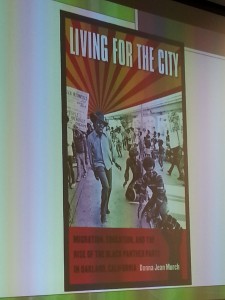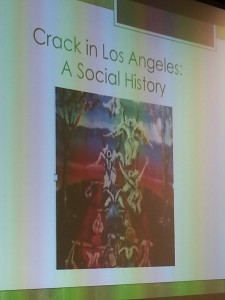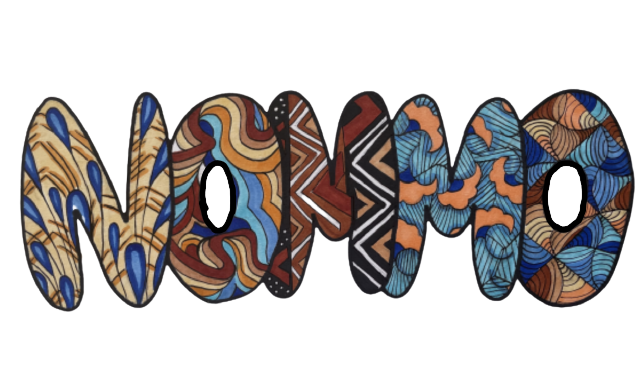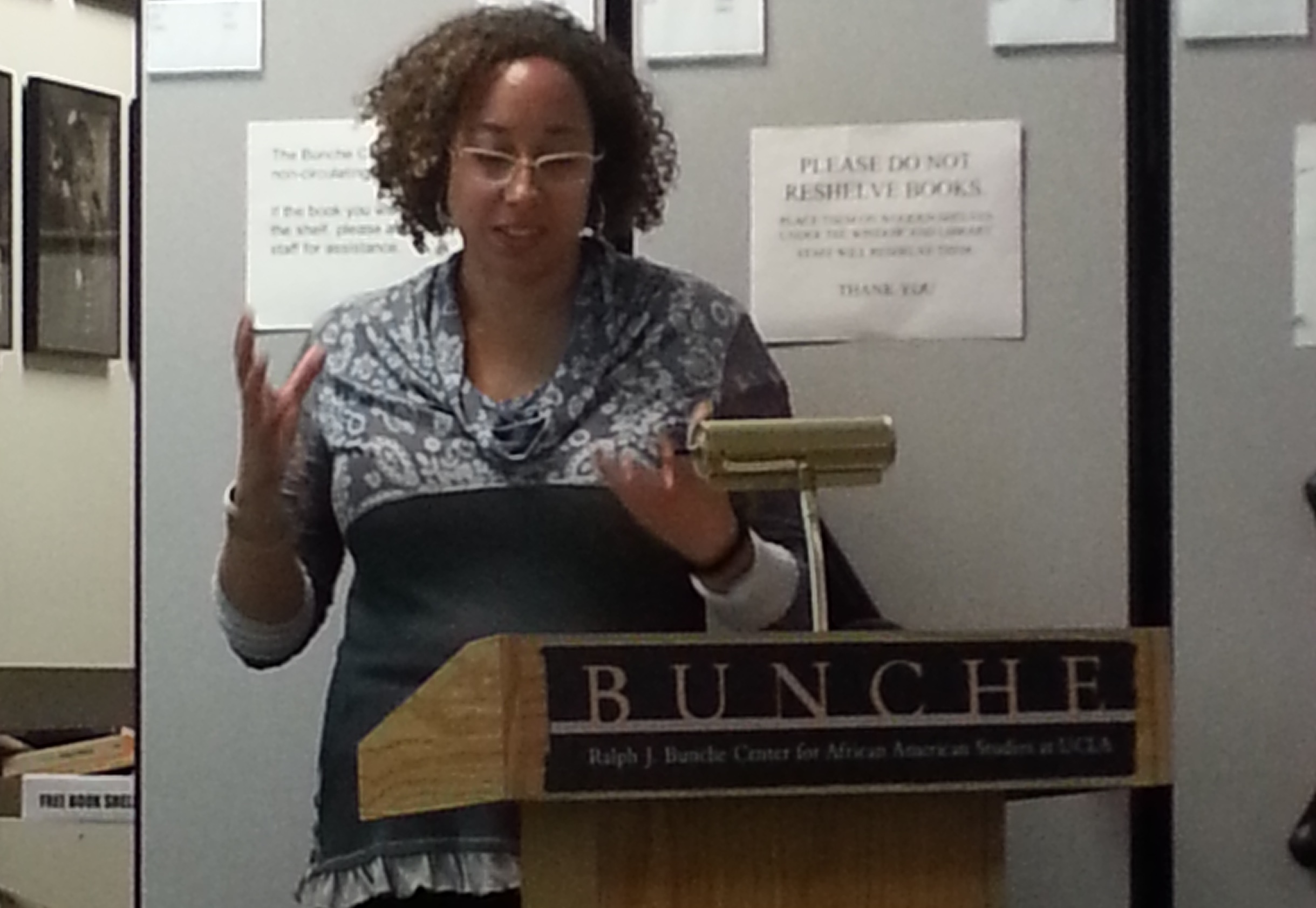Ever wonder how Black culture in South LA went from Black revolutionary in the 60s and 70s, to gangbanging in the 80s and 90s? Or how South LA, once the headquarters of the Black Panther Party in Los Angeles, evolved into the gang and drug trafficking capital of the nation? On Thursday, February 27, Donna Murch gave a lecture at the Bunche Center’s “Circle of thought Lectures,” in which she unpacked the details of this social evolution (or devolution).
 Murch’s talk focused on her current research on LA’s Black culture in the period after the Black Panther Party. After Murch finished her first book, Living for the city, which focuses on the development of youth movements in Oakland during 1960s, she felt there was more to the story. “I was left with a new set of questions… What happened to the activist after the Black Power Movement… during a period of right wing resurgence?” she said to the crowd of about a dozen UCLA students and faculty. Her findings indicate that the devastation of Black and Hispanic neighborhoods in LA during the 80s is the product of the “War on Drugs—which she said was a racially motivated enterprise.
Murch’s talk focused on her current research on LA’s Black culture in the period after the Black Panther Party. After Murch finished her first book, Living for the city, which focuses on the development of youth movements in Oakland during 1960s, she felt there was more to the story. “I was left with a new set of questions… What happened to the activist after the Black Power Movement… during a period of right wing resurgence?” she said to the crowd of about a dozen UCLA students and faculty. Her findings indicate that the devastation of Black and Hispanic neighborhoods in LA during the 80s is the product of the “War on Drugs—which she said was a racially motivated enterprise.
Murch argued that the 1980s was “An assault on the accomplishments of the post-war social movements. The war on drugs criminalized the kinds of young people that participated in the Black Power Movement… the kinds of people that were really the core bases of the party.” She suggested that this criminalization lead to the increase of police militarization.
The Militarization of the LAPD
“Many of the LAPD’s aggressive tactics stem from a much earlier era of protest… the development of S.W.A.T (Special Weapons and Tactics) is really the product of campaigns against Black and Brown Power organizations, and S.W.A.T. was developed in [19]67 by a group of elite police who were all former military, who were all Vietnam vets… it was first deployed against the Southern California Black Panther Party at 41st and Central,” she said.
Murch continued to explain how militarization of the LAPD increased in 1985 when the LAPD, under the authority of Daryl Gates, began to use a new tool in the “War on Drugs”—a 14-feet-high battering ram attached to an armored vehicle. This weapon gained public attention in 1985 when the LAPD used it to break into a house in Pacoima. Murch said, “After tearing a gaping hole in the outside wall, police found two women and three children eating ice cream. S.W.A.T uncovered negligible quantities of drugs, and the district attorney subsequently declined to prosecute.”
This, she said, lead to an uproar from the Black Clergy and the San Fernando chapter of the NAACP. “We don’t need new weapons tried out on us,” Murch said, quoting a Black Clergy.
Despite this backlash, there were some in the Black community who supported the increased militarization of the LAPD. Murch said, “City councilmen David Cunningham, who represented South LA, praised Gates’ actions. Quote ‘ Go right ahead chief, you do whatever you can to get rid of these rock houses, they’re gonna destroy the Black community if you don’t.’”
Murch argued that such support from Blacks in the community, compounded with the rhetoric of the Regan and Bush administration, granted legitimacy to the militarization of the LAPD and the mass incarcerations of Black and Hispanic youth.
“Scholars have argued that between 1985 and 2000, drug offenses compose two thirds of increase in federal inmates, and half of the increase in state prison populations… The extreme racial disparities of this war are well known. In spite of comparable drug use patterns in the general population, African Americans [who] compose roughly 13 percent of the US, make up 37 percent of those arrested on drug charges and 56 percent of those incarcerated in state prisons for drug conviction,” she said.
War of Drugs turns into the War on gangs
 “The war on drugs in LA can be more aptly described as the war on gangs… Between 1984 and 1988 California passed over 80 separate gang measures and developed a powerful new legal tool—the anti-gang injunction.” She argued that the civil nature of these injunctions meant that the state didn’t have to provide legal representation. Moreover she said that gangs in LA were seen as “Unincorporated affiliations [that] made it possible for [the state] to continually add people after the injunction was issued.”
“The war on drugs in LA can be more aptly described as the war on gangs… Between 1984 and 1988 California passed over 80 separate gang measures and developed a powerful new legal tool—the anti-gang injunction.” She argued that the civil nature of these injunctions meant that the state didn’t have to provide legal representation. Moreover she said that gangs in LA were seen as “Unincorporated affiliations [that] made it possible for [the state] to continually add people after the injunction was issued.”
By the 1990s, “The Federal General Accounting Office revealed that the sheriffs listed 47 percent of all African American men in LA County, between ages of 22 and 24, as gang members… The combination of racially targeted policing, with denial of legal representation made it virtually impossible for youth to have their names removed from these gang data bases,” she said.
Murch also highlighted a peculiar irony; despite the fact that gangs became the focus of the War on Drugs, research found the correlation between gangs and drug dealing to be meager. She said, “Most gangs do not engage in drug dealing… that’s one of the greatest misconceptions, and it’s where law enforcement, the state, and popular culture meet: in conflating street gangs with drug dealing.”
Trans-National
Crack’s emergence in South LA remained to be accounted for. How did crack get into the hood in the first place? Who’s to blame? Murch assured the crowd that “It’s not teenagers in South LA.” For the culprit, Murch directed the audience’s attention to the Regan administration and Central America. Murch said:
“Examined from hind-sight, crack’s emergence was inseparable from Ronald Ragan’s Cold War insurgency campaigns in Latin America, and the trans-national illicit drug economies these policies engendered… Sweeping north from Peru and Columbia, this onslaught of ambient cocaine initiated a sharp drop in the price of a kilo, and as a result prompted underground distributers to develop new methods for expanding the drug market, [that was] traditionally [for the] wealthy elite, to poor and working class people. A reengineered mixture of cocaine, baking soda, and other additives, resulted in a product called ‘rock’, and later, crack.
More important than pharmacological effects, according to Murch, was its cost:
“Initially dropping from 24 dollars in the early 80s, which at that time was considered revolutionary for cocaine… the price of an individual unit of cocaine dropped to five dollars per hit…. Anticommunist drug trafficking networks, forged through the contra war in Nicaragua, and the Bolivian cocaine…. In 1980, [the networks] supplied illicit drugs to LA and other regional markets in the US. Despite its mass expenditures on the domestic war on drugs, the Regan administration’s support for Central American counter insurgency was a driving force behind the crack explosions in the US.
Murch’s research will culminate in a book to be released at an unspecified time. She announced that of all her findings, the reality of the Black support of the War on Drugs in its early stages, and the unknown history of 1980s transnational politics’ role in the crack epidemic, were shocking to her.

